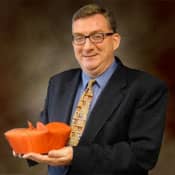Long before people arrived in large numbers, Italian priests played a major role in developing Catholic higher education. Father John Grassi was one of Georgetown's first presidents. Out West, Italian Jesuits founded universities: Regis, San Francisco, Santa Clara, and Gonzaga. (In Montana they served Native Americans; Ravalli County is named for a Jesuit.) Italian Vincentians established seminaries nationwide, while Italian Franciscans founded St. Bonaventure University in upstate New York.
In 1889, Mother Frances X. Cabrini arrived in New York with six Sisters. In his history of the New York Archdiocese, Monsignor Thomas Shelley writes: "They were active in the Italian community as teachers, nurses, social workers and counselors even ministering to prisoners on death row in the prisons." In 1946, Cabrini was the first American citizen canonized. (In 1975, Elizabeth Seton became the first American-born saint.) A model of urban ministry, St. Francis Cabrini is also the patron saint of immigrants.
Few groups have labored under more degrading stereotypes than Italian-Americans, who had to overcome prejudice inside and outside the Church. Buried beneath these typecasts is a rich heritage of service, scholarship, and hands-on ministry dating back centuries and continuing today. In the wake of March 19th, therefore, I offer readers, Italian and non-Italian, a belated Buona Festa di San Giuseppe!





